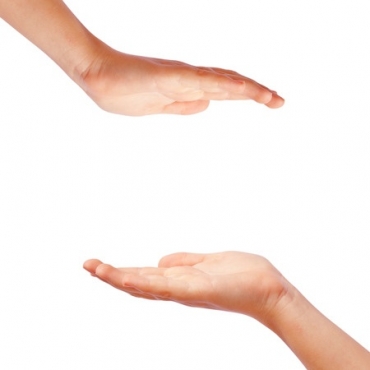
Osteopathic treatment
Why osteopathy is one of the most effective treatments?
Osteopathy as a method of manual physical impact on the human body is one of the most soft and gentle ways of restoring health. This creates a positive psychological atmosphere and increases the effectiveness of treatment. Osteopathy works not only on a local level, but with the entire organism as a whole, as the treatment is based on the principle - "the organism is a single unit”. The osteopath does not treat only the symptoms. An integrated approach allows to identify and eliminate both the visible symptoms and the underlying causes of diseases. Osteopath increases general vitality and resilience, vitality of the tissues, which allows to activate the immune system and to start self-correcting forces of the body working.
For who is osteopathy indicated?
Osteopathy is non-invasive, that is, not aggressive and absolutely safe for health, as the osteopath uses techniques which exclude rough impact, remaining only within the physiological barriers of the tissue. Osteopathic treatment does not cause side effects. For these reasons it is recommended for a wide range of patients and can be indicated for treatment of people for whom other methods cannot be applied. It can help in the restoration of health:
- Of women during pregnancy to maintain their health and prepare for childbirth;
- Of women in the postpartum period,
- Of newborns to correct birth defects,
- Of children of any age,
- Of elderly people.
What is the osteopath?
Osteopathy does not use medication. The effectiveness of the method depends exclusively on the skills of a specialist. The training of the osteopath is a multi-year systematic educational process, involving theoretical and practical studies that teach the skill of diagnosis and treatment with hands, acquaint with possible indications and contraindications in treatment of various diseases and, most importantly, teach the ability not to harm the patient. This path of professional training is long and serious.
What is the diagnosing and treatment like?
During the first visit, the osteopath carefully examines the patient, makes osteopathic diagnosis and identifies functional disorders of muscle, bone and ligaments system. Osteopathy uses traditional and specifically osteopathic methods of palpation diagnosis. It is advisable to bring at the first session the results of different examinations (x-ray, computed tomography or magnetic resonance imaging), which help in correct diagnosis. Some problems can be solved in the process of the first examination:
- Tense muscles relax,
- Blood flow improves,
- Organs get better nutrition.
Sensitive hands of the doctor fix the trouble in the body and provide a sense of harmony and inner balance.The osteopath gently and painlessly corrects problems of joints and spine. Osteopathic treatment eliminates uneven stress on the joints, regulates static (load-related) and dynamic (due to motion) changes in the spine. The osteopath relieves fatigue, improves blood circulation and eliminates muscle pain. Treatment is carried out by use of osteopathic techniques, performed by hands of the doctor within the physiological boundaries of movement of tissues to correct the causes of dysfunction. The purpose of osteopathic impact:
- to reduce pain
- to reduce the effect of stress factors on the body
Osteopathic treatment leads to normalization of metabolism and mobilization of internal resources of the body to cure itself
What does osteopathy treat?
Osteopathy aims not only at eliminating diseases of the musculoskeletal and other systems, but at restoring the whole organism. The osteopath sees the body as a unified system. This allows to achieve positive results even in cases when recovery seems impossible. The range of diseases where patients are advised to consult a qualified osteopath is very broad and varied.
- ENT diseases: sinusitis, chronic otitis , sinusitis, tonsillitis.
- Diseases of joints and spine: scoliosis, spondylosis, degenerative disc disease, disc hernias,osteoarthritis, arthritis and others.
- Neurological diseases: intercostal neuralgia, abnormal intracranial pressure, headaches, migraines and other pathologies.
- Diseases of the respiratory system: bronchitis, bronchial asthma, inflammatory processes in the lungs and more.
- Pathology of internal organs: stomach ulcer, cholecystitis, gastritis, liver diseases, haemorrhoids, pancreatitis, hepatitis, and more.
- Female diseases: infertility, menstrual pains, irregularities of the cycle.
- Men's diseases: prostate adenoma, prostatitis, impotence.
- The effects of traumas and operations: relaxation of postoperative adhesions and scarring that occurs after surgery, the consequences of traumatic brain injury, contractures nd other injuries of the musculoskeletal system
- Problems of pregnant women: back pain, preparation for childbirth and rehabilitation
- Child diseases: cerebral palsy, torticollis, hydrocephalic syndrome, brain dysfunction, encephalopathy, flat, developmental delay and more.
- Osteopaths of our Center will choose an effective and safe method of treatment to restore health in short time.
Always with you around the world – Canadian Osteopathic Center
